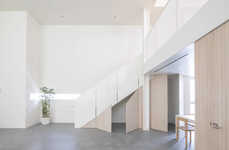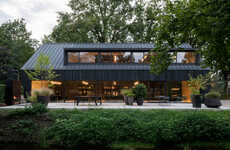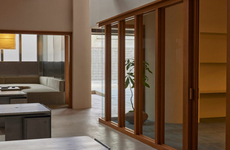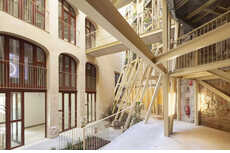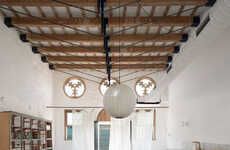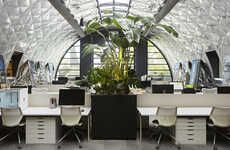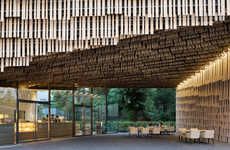
The VARA Workspace Takes History into Account
Vasiliki Marapas — August 21, 2014 — Art & Design
References: o-plus-a & contemporist
Studio O+A designed VARA, a housing development for urban professionals located in San Francisco, California.
The architects sought to achieve a balance between the contemporary living practices of these professionals, and the historical context of the Mission District. Even the name 'Vara,' which was formerly a numerical unit equivalent to 33 inches, is a historical reference from when California was under Spanish rule.
Formerly, the building housed a print shop famous for its work on fruit and vegetable labels. The architects considered this, along with California's rich agricultural history, when designing the rustic spaces, including a lobby, bar, gym and courtyard. Some of the original building's wood was salvaged and re-purposed to further accentuate the public spaces.
The architects sought to achieve a balance between the contemporary living practices of these professionals, and the historical context of the Mission District. Even the name 'Vara,' which was formerly a numerical unit equivalent to 33 inches, is a historical reference from when California was under Spanish rule.
Formerly, the building housed a print shop famous for its work on fruit and vegetable labels. The architects considered this, along with California's rich agricultural history, when designing the rustic spaces, including a lobby, bar, gym and courtyard. Some of the original building's wood was salvaged and re-purposed to further accentuate the public spaces.
Trend Themes
1. Historical Design - Integrating historical references and design elements into contemporary spaces for a unique and immersive experience.
2. Repurposing Materials - Salvaging and reusing materials from existing structures to add character and sustainability to new architectural designs.
3. Local Context - Creating spaces that reflect and celebrate the cultural heritage and history of the surrounding area.
Industry Implications
1. Architecture - Architects can explore opportunities to merge historical and contemporary design elements in their projects.
2. Real Estate Development - Developers can consider incorporating historical references and repurposed materials to create unique and marketable urban living spaces.
3. Hospitality - Hotels, bars, and gyms can embrace historical themes and repurposed materials to create distinct and memorable experiences for their guests.
4.1
Score
Popularity
Activity
Freshness


